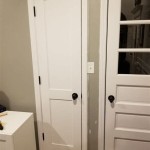Insulating interior walls is an important part of any home renovation project. Insulation helps to keep the home’s interior warm in the winter and cool in the summer. It also helps to reduce energy costs, as well as reduce noise from the outside. But do interior walls actually need insulation? The answer is yes, as long as the walls are not already insulated.
What are the Benefits of Insulating Interior Walls?
Insulating interior walls has many benefits. Insulation helps to keep the home’s interior temperature more consistent, reducing the need for air conditioning in the summer and heating in the winter. It also helps to block out noise from the outside, creating a quieter and more comfortable living space. Finally, insulation can help reduce energy costs, as it prevents heated or cooled air from escaping through the walls.
What Types of Insulation Should I Use for Interior Walls?
When insulating interior walls, the most common materials used are fiberglass batts, foam board, and spray foam insulation. Fiberglass batts are the most affordable option and are usually installed between the studs. Foam board is more expensive, but it is easier to install and provides a higher R-value. Spray foam insulation is the most expensive option, but it provides the highest R-value and is the best choice for insulating irregularly shaped spaces.
What Other Factors Should I Consider When Insulating Interior Walls?
When insulating interior walls, it is important to consider the existing insulation in the walls, as well as the climate in which the home is located. If the walls already have insulation, it may not be necessary to add more. Additionally, in climates with extreme temperatures, it may be necessary to use insulation with a higher R-value. Finally, it is important to consider the type of wall construction and the type of material used, as some materials may require special insulation.




/man-installing-insulation-182186960-583dfbb05f9b58d5b170a0ee.jpg)










Related Posts








